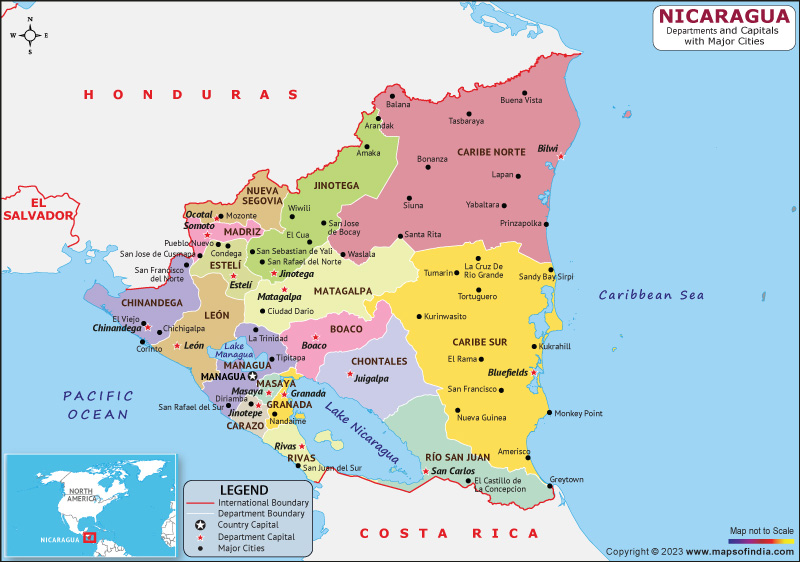The Republic of Nicaragua, also known as Nicaragua, is the largest nation in Central America. Its capital and largest city is Managua. According to estimates from 2015, it is Central America's second-largest city. Mestizo, Indigenous, European, and African ancestry are all represented among Nicaragua's six million multiethnic residents. Spanish is the most common language.
Nicaragua is known for its folklore, music, and cuisine. It is also famous for being the second largest rainforest in America, There are also volcanoes and which makes it more popular. It is the birthplace of the hispanic modern system. The food is very famous as there are more than 2000 varieties. Lake Managua and Lake Nicaragua are present in Nicaragua.History
When Christopher Columbus invaded Honduras and traveled east on his fourth voyage in 1502, he became the first European to discover Nicaragua. Nicarao is the first settler in Nicaragua. The eastern side lived with fishing and agriculture. The Spanish came in the 16th century. The indigenous people were affected by the Spaniards. People survived where the Europeans weren't present.
The Leons acted against the Spanish conquerors. They were granted more independence in 1812 by the Spanish constitution. There was rivalry between Leon and Granada. In 1821, Nicaragua won its freedom from Spanish rule. In the 1980s US military created interventions and supported the Conservatives; in Grenada. Now Nicaragua is a presidential departments with the President being both heads of departments and government. The judicial system is independent.
Culture
The immigration of Spanish-speaking people has influenced the culture of Nicaragua. There is also African influence around the East. The popular music rhythms are intense. Due to the influence of Europe, the musical instrument Marimba is common in Central America. There are dance music also called Punta, soca music, and reggae which are very popular in the country.
Language
Spanish is the official language of Nicaragua. But in Mosquito Coast, indigenous languages, and English is also spoken. On the Caribbean coast, Spanish, Garifuna, Miskito, Nicaragua Creole English, Rama, Sumo-Myangna, Nicaraguan sign language, Matagalpa, Monimbo, and Subtiaba are the main languages spoken in Nicaragua. Spanish is spoken by 90% of the population.
Geography
Nicaragua borders with the Caribbean and the North pacific ocean. With a total area of 130,370 square kilometers, Nicaragua contains a range of climatic conditions and topographic features. The Pacific lowlands, the wetter, cooler central highlands, and the Caribbean lowlands are the three main geographic regions that make up the nation. The climate is usually hot and temperate around the country. The rainfall ranges from 2500 to 6000 millimeters Caribbean is nearby.
| Official Name | Republic of Nicaragua |
| Capital | Managua |
| Population | 6804000 |
| Area | 130,370 square kilometers |
| Currency | Córdoba |
| Religion | Christianism,Catholicism |
| Language | Spanish |
| Major Cities | Managua,León, Granada, Jinotega |
FAQs
Q1: What is the official language of Nicaragua?
The official language of Nicaragua is Spanish.
Q2: What is the Capital of Nicaragua?
The capital of Nicaragua is Managua.
Q3: What is the currency of Nicaragua?
The currency of Nicaragua is Córdoba.
Q4: What is the climate in Nicaragua?
Nicaragua has a tropical climate which ranges between 21˚C-27˚C. It has two rainfall seasons: a 'wet' season' (May-October) and a 'dry' season (November-April). A dry period called the 'Canícula' interrupts during late July and early August.
Last Updated on: April 04, 2023
